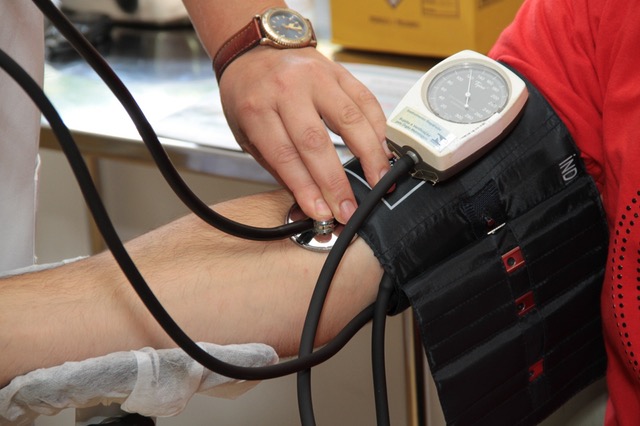
If you suffer from high blood pressure (hypertension) and are planning a flight, then you need to be aware of the risks of flying with blood pressure, and how you can lessen those risks before and during the flight.
The reason for increased risks during flying is because of hypoxia, which is a result of high altitude. It is this hypoxia (lack of oxygen in the blood) that can lead to several health compactions during the flight because of its associated increase in blood pressure. So, what are the risks of flying with high blood pressure?
Deep Vein Thrombosis
Deep vein thrombosis or DVT, is when a blood clot occurs within the calf. This is due to the blood becoming ‘thick’. This is very painful and will feel hot to the touch. This will need to be treated with anticoagulant therapy. What is of most concern is that the clot can travel to other parts of the body, or that there may be multiple clots. If a clot lodges in the lungs, this can result in a Pulmonary Embolism, and if in the brain, a stroke. Cardiac arrest can also be a complication. To help prevent DVT, drink plenty of fluids, wear DVT stockings, and walk around the plane whenever possible.
Fluid Retention
When your blood pressure is high and you fly, you are also at a risk of swelling. Your face, ankles and hands can all swell due to fluid retention, as the kidneys find it increasingly difficult to filter fluid properly as a result of hypertension. To try and avoid swelling, it is advised that you do not eat any salty snacks, as salt increases blood pressure, and will put extra pressure on your kidneys. Instead, have non salty snacks and drink plenty of water.
The Importance Of Managing High Blood Pressure Through Medication
If your blood pressure is higher than 160/100, you need medication in order to bring the reading down. Ideally your BP should be no higher than 150/90. You need to have a blood pressure that is managed and stable, via medication, before you fly to reduce the associated risks that we have stated. Some common medications are listed below.
Angiotensin-converting enzyme inhibitors Otherwise known as ACE inhibitors, this heart medication reduces blood pressure by relaxing the vessels of the heart. A common version of this type is ramipril.
Angiotensin-2 receptor blockers The ARB is similar to ACE, and is often prescribed when an individual is unable to take ACEs due to the side effects of headaches or suffering a rash. A common tablet is that of candesartan.
Calcium channel blockers This heart medication widens the blood vessels, helping to increase blood flow, reduce stress on the heart and therefore lowering blood pressure. Nifedipine is a common calcium channel blocker.
Diuretics Diuretics, also referred to as ‘water tablets’ can help to reduce blood pressure. Diuretics work by helping the kidneys flush out salt and excess fluid from the body, therefore quickly lowering blood pressure. A common diuretic is bendroflumethiazide.
The risks of flying with high blood pressure are huge. It is incredibly dangerous for your health. Speak to your GP, manage your blood pressure and take on board safety precautions such as drinking plenty of fluids and moving about when you can, to keep your blood pressure down.










